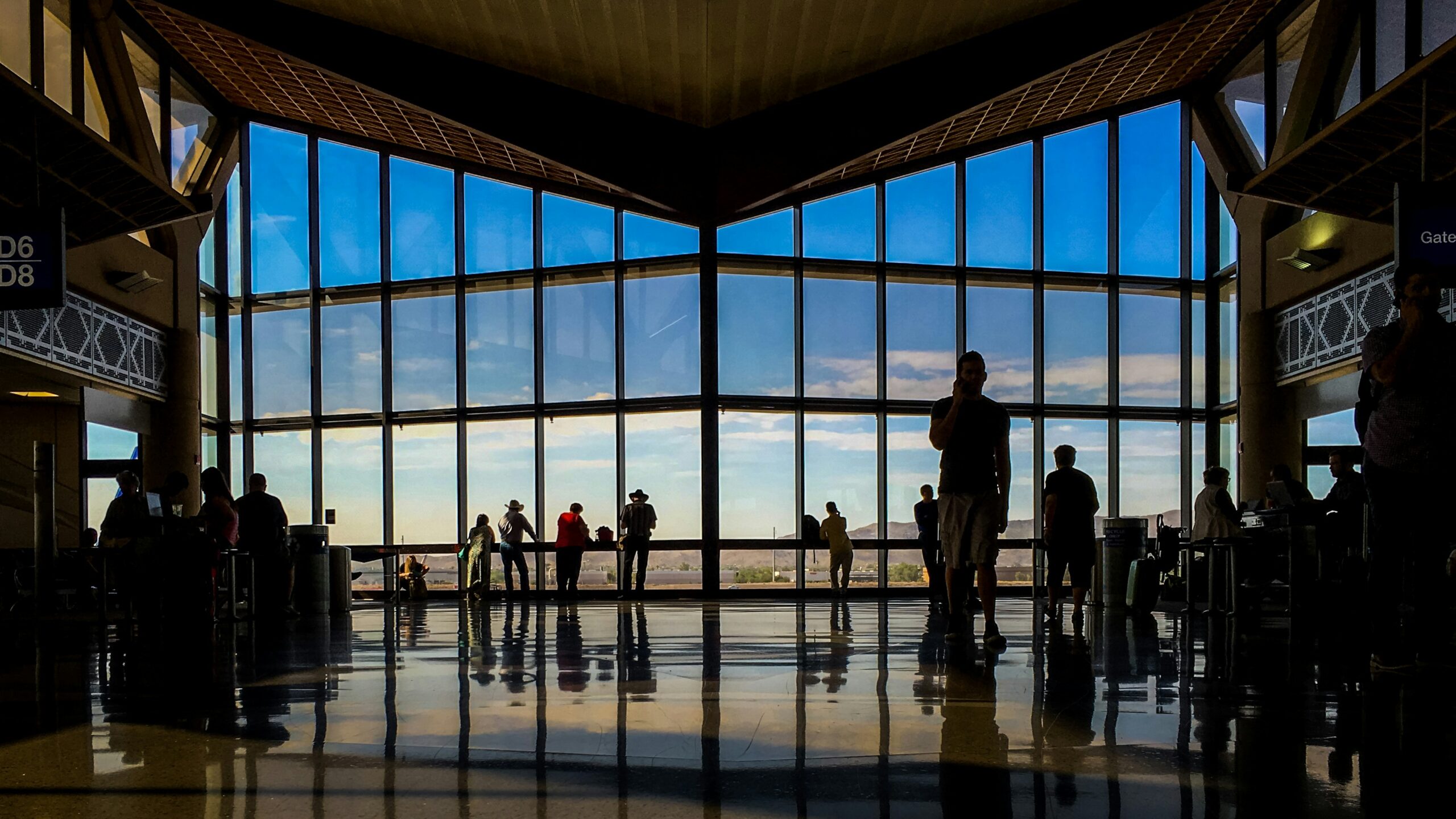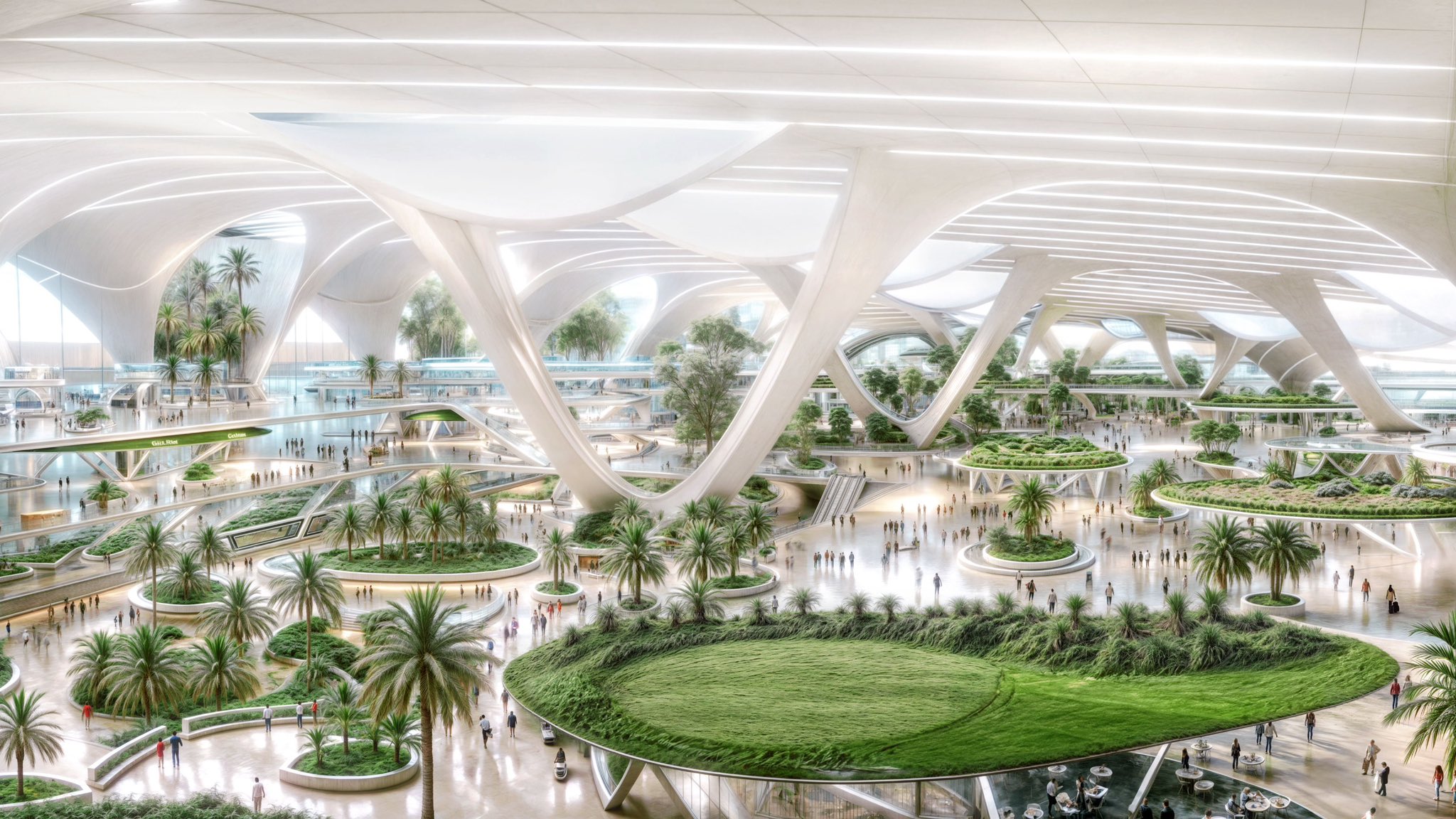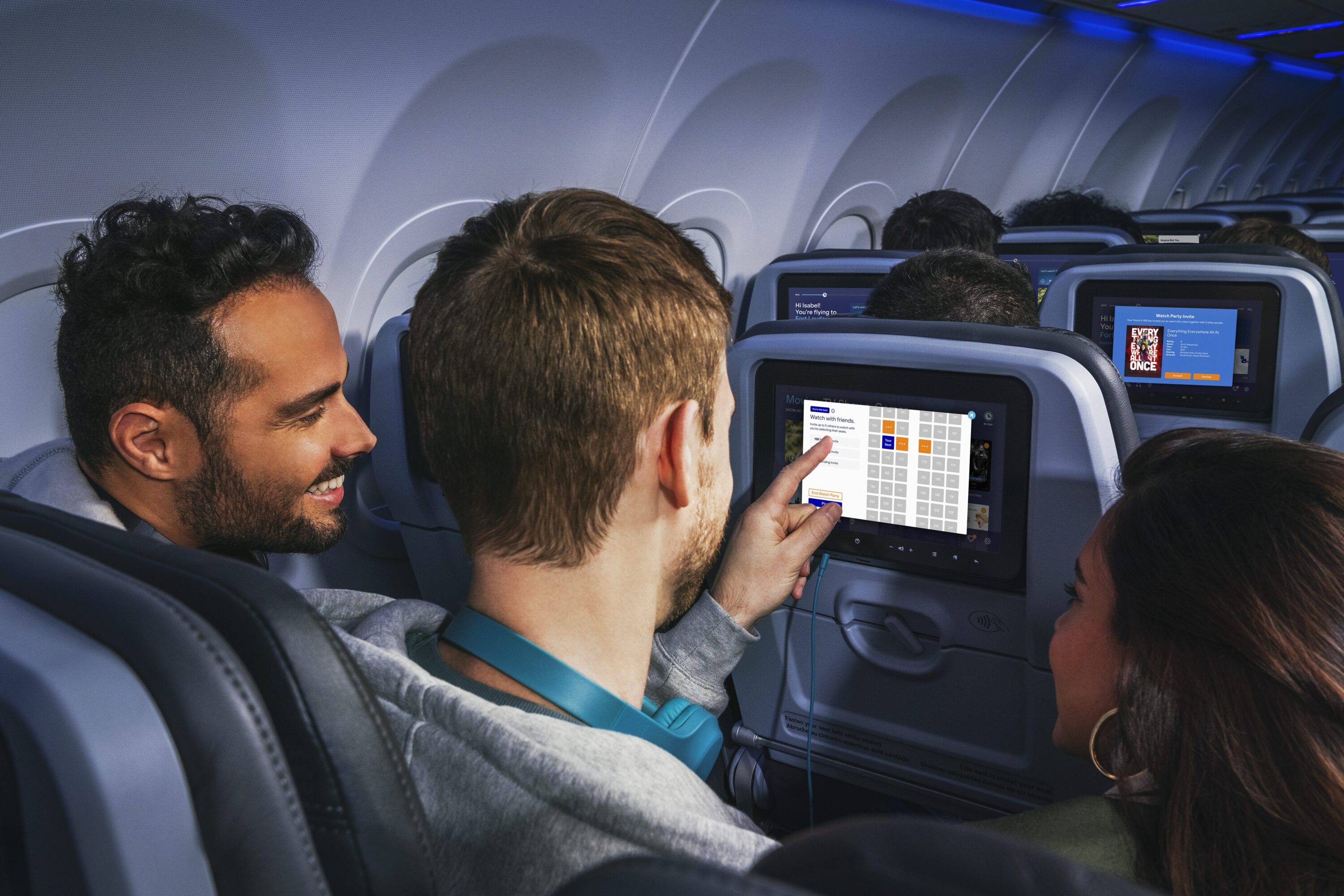A Behind-the-Scenes Look Inside Boeing’s Secluded Customer Experience Center
Tucked away from the public eye, this space is a haven for Boeing's top customers to craft the future of cabin design
November 9, 2023
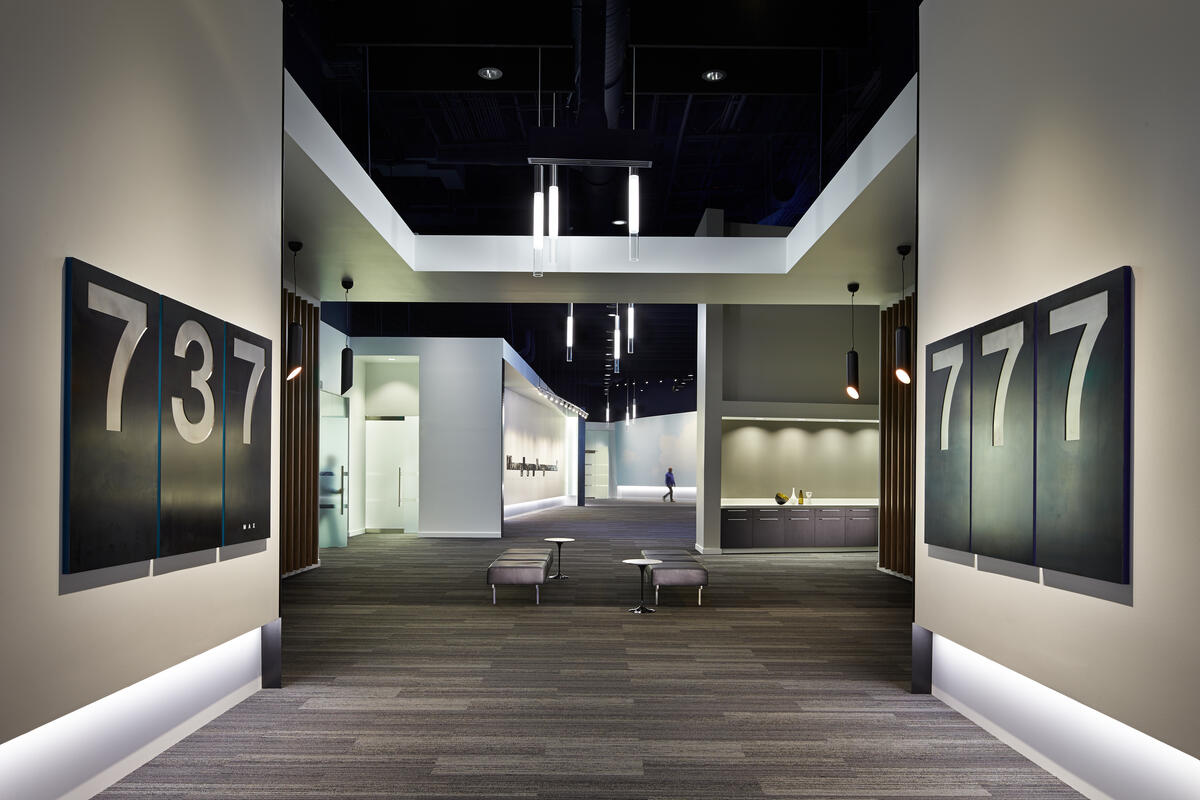
Photo: The Boeing Customer Experience Center. Courtesy of Teague, The Boeing Company and GLY Construction.
The Boeing Customer Experience Center (CEC), a hidden gem for aviation enthusiasts, is a portal into the captivating world of aircraft design, where history and innovation seamlessly blend.
From the golden age of the Boeing 707 to the groundbreaking 787 Dreamliner, this center is the culmination of decades of research transformed into tangible products—all available to the exclusive eyes of Boeing’s finest clients.
Located 10 minutes east of SeaTac Airport, Boeing erected this building with the sole purpose of enchanting its customers, bringing them to various stages—from the initial discussions to post-purchase celebrations. The CEC is a space for building and nurturing relationships with airline customers, from pilots and mechanics to network and fleet analysts and board directors.
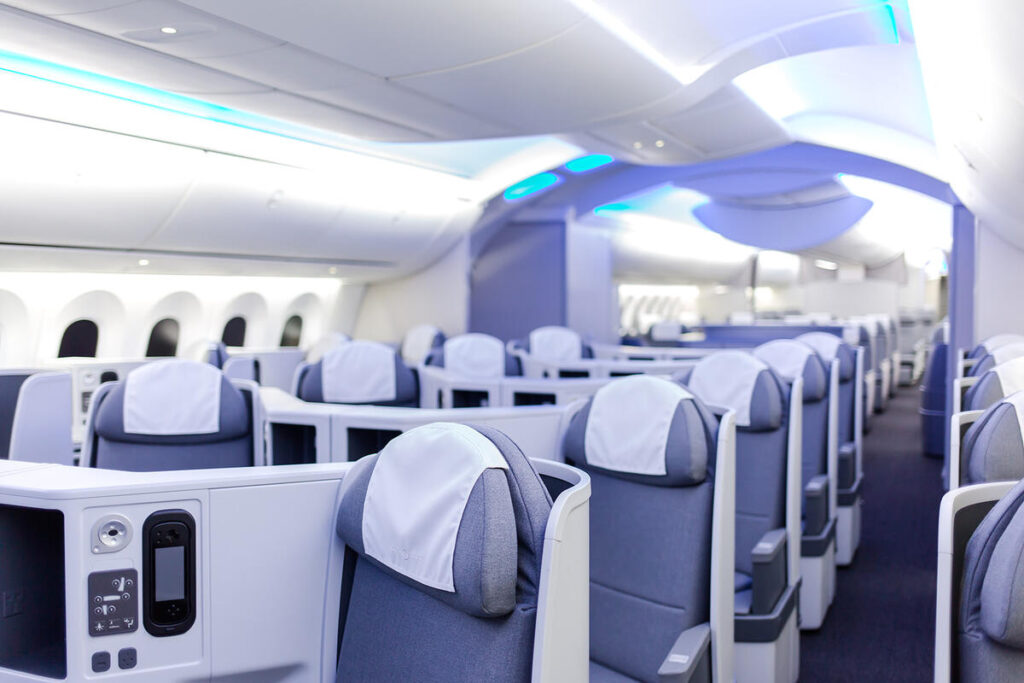
Photo: Boeing 787 Mockup Cabin at the Customer Experience Center. Courtesy of Boeing
The building has been carefully designed to showcase Boeing’s best products, featuring real-scale mockups of the Boeing 737 MAX, 787 Dreamliner, and a future mockup of the 777X. These are available for airline customers to explore, giving them a glimpse into what their potential cabins might look like.
The facility also includes conference rooms, a collaboration center, and a private lounge reserved for airline executives. All the digitized literature for purchasing a Boeing airplane is available, making it a one-stop shop for airline customers.
The CEC has everything they need to make an informed decision.
The CEC: Gathering Decades of Research
During an exclusive interview with Business Traveler, Brenna Wynhof, the Regional Director for Cabin Marketing at Boeing, did a deep dive into the history of the CEC and revealed exciting details that contribute to the comfort of modern air travel.

Photo: The Boeing Customer Experience Center. Courtesy of Teague, The Boeing Company and GLY Construction.
This facility is versatile, adaptable to varied customer needs, and strictly off-limits to civilians. “We cordially invite customers to join us here at any point of their campaign, be it in the early stages, mid-campaign, or post-campaign, for celebratory purposes,” explains Wynhof.
“We want to maintain good relationships with our customers, and sometimes this involves bringing them here, even when they’re not looking to order. We want to show them that we care about them and want to talk to them.”
The Collaboration Lounge: A Haven of Innovation and Partnership
Inside, the CEC includes a secluded area known as The Collaboration Lounge. Inside this “strictly off-limits” space, airlines and Boeing come together for discussions, strategies, and celebrations of their partnerships. It provides an immersive, customizable environment for building relationships and fostering meaningful dialogues.
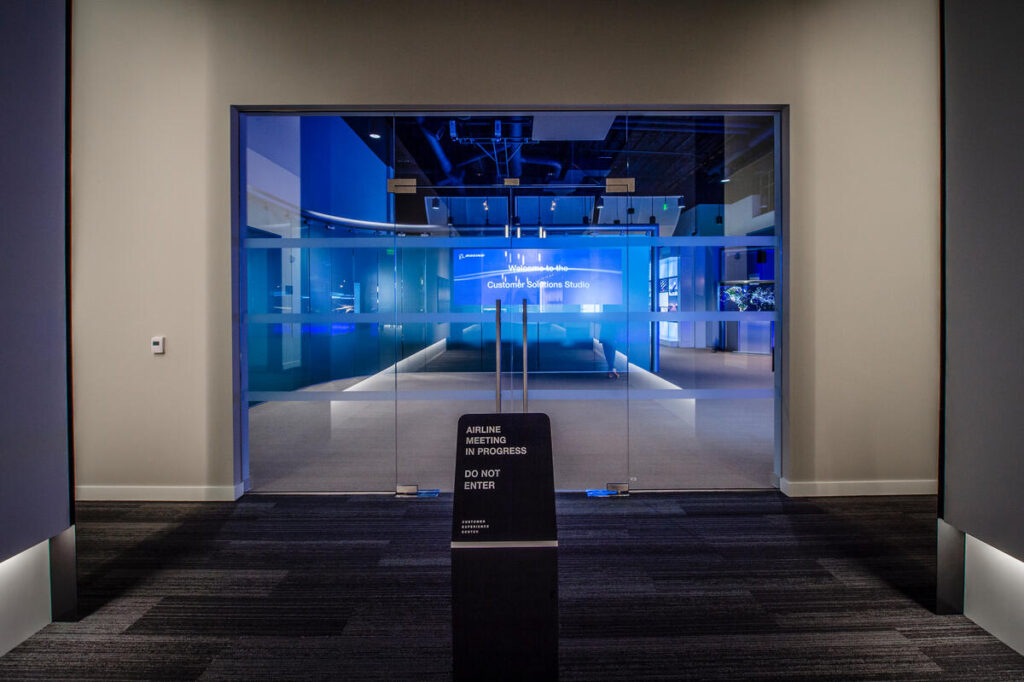
Photo: The Boeing Collaboration Lounge. Courtesy of The Boeing Company
The Collaboration Lounge, a recent addition to the CEC, is a versatile space designed to encourage immersive and engaging discussions.
“While larger group gatherings and keynotes are held in the immersive space, this area can be divided into smaller sections for more intimate conversations,” Wynhof says. “It’s a purpose-driven design that accommodates airlines’ needs — be it discussing configurations or sharing information on Boeing’s offerings.”
The focus here is on creating an immersive experience for Boeing’s customers. “Every airline’s kiosk is customized to showcase its unique branding and messaging — a personalized approach that extends to the lighting, which adapts to the airline’s needs, creating a space that feels tailor-made for each visitor,” she says.

Photo: The Collaboration Lounge. Courtesy of TEAGUE; The Boeing Company and GLY Construction.
While it’s not the area for detailed cabin configuration discussions, it serves as an essential bridge in the journey of airline partnership. “For those defining discussions, airlines can move to a configuration studio or an airplane integration center, where they can explore all the options, touch and feel the elements, and make decisions that align with their brand and vision,” Wynhof says.
The lounge is designed to make every visit feel unique and comfortable, accommodating diverse cultural requirements, including a prayer room. Boeing’s commitment to being a welcoming and accommodating partner shines through in every detail of this space.
The Origins of Boeing Cabin Design
Boeing, an emblem of aviation excellence, has been shaping our skies for decades with more than 10,000 planes delivered. Stepping into the CEC is like stepping into a carefully built time machine, one that propels you through the evolution of aviation but from the angle of Boeing’s commitment to passenger satisfaction.
According to Wynhof, this philosophy centers on three fundamental principles: “airplanes for people, by design, and connected to the sky,” all providing the bedrock for Boeing’s approach to crafting unforgettable passenger experiences.
Wynhof explained that Boeing’s path in cabin comfort took a fascinating turn in the late 1990s—when it faced the formidable challenge of replacing the aging 767 and meeting the industry’s insatiable appetite for speed.
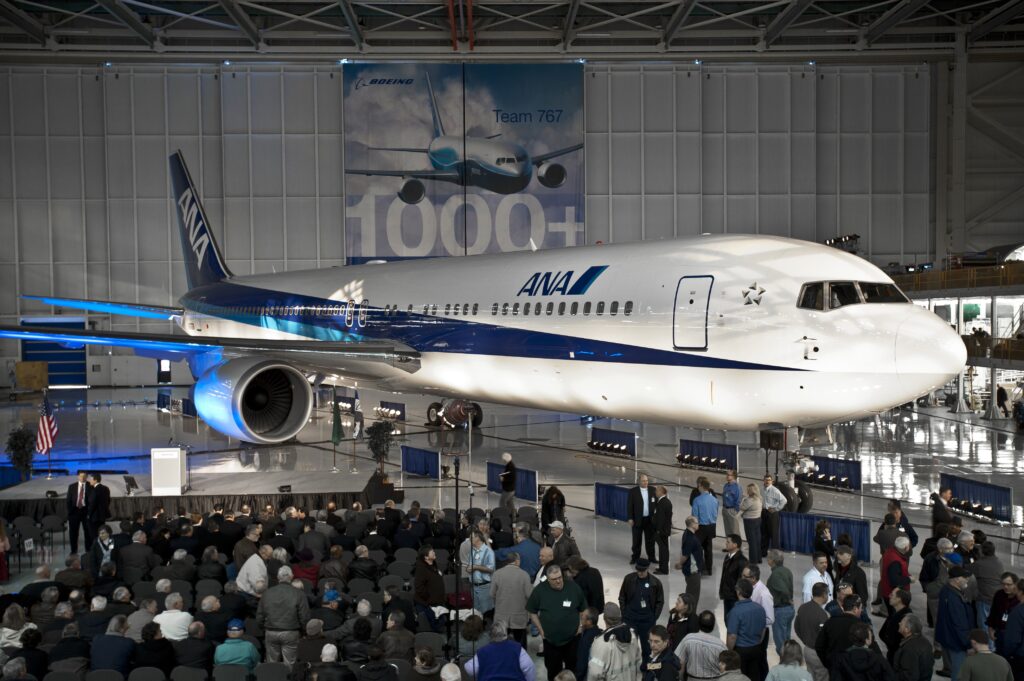
Photo: Boeing delivers 1,000th 767 to ANA. Courtesy of The Boeing Company
Boeing’s response was nothing short of visionary – the Boeing Sonic Cruiser, designed to soar just under the speed of sound (Mach 0.98) in the utmost comfort. This audacious aircraft promised to shave precious hours off Transatlantic and Transpacific flights while avoiding the infamous sonic boom that had plagued the Concorde.
The Sonic Cruiser didn’t just catch the airlines’ attention; it had passengers spellbound, too. Some airlines were so infatuated that they contemplated purchasing Boeing’s production line to secure these revolutionary aircraft. The Sonic Cruiser would be more than just a speed demon; it would be a work of art in the skies—a fresh perspective on what an airplane could be.

Photo: Boeing Sonic Cruiser. Courtesy of The Boeing Company
But Boeing understood that speed alone wouldn’t suffice. To succeed, they needed to delve deep into the psyche of passengers. In a bold move, says Wynhof, Boeing recruited a psychologist and a cultural anthropologist to conduct groundbreaking research into the unspoken desires and needs of travelers.
The initial focus groups delivered disheartening feedback, with participants expressing a profound aversion to flying in “metal tubes.” It was a daunting revelation, but it led Boeing to understand passengers better.
The turning point in the research came when participants were shown a picture of the Sonic Cruiser, devoid of any additional information. A seismic shift occurred as people revealed an intense desire to fly on this innovative aircraft. The profound insight was that an unspoken emotional connection existed between passengers and the aircraft’s design—an enigma Boeing determined to explore further.
But the early 2000s marked a somber moment in aviation history with the tragedy of 9/11, a transformative event that reshaped the industry’s priorities. Speed took a backseat, replaced by the need for fuel efficiency and cost savings.
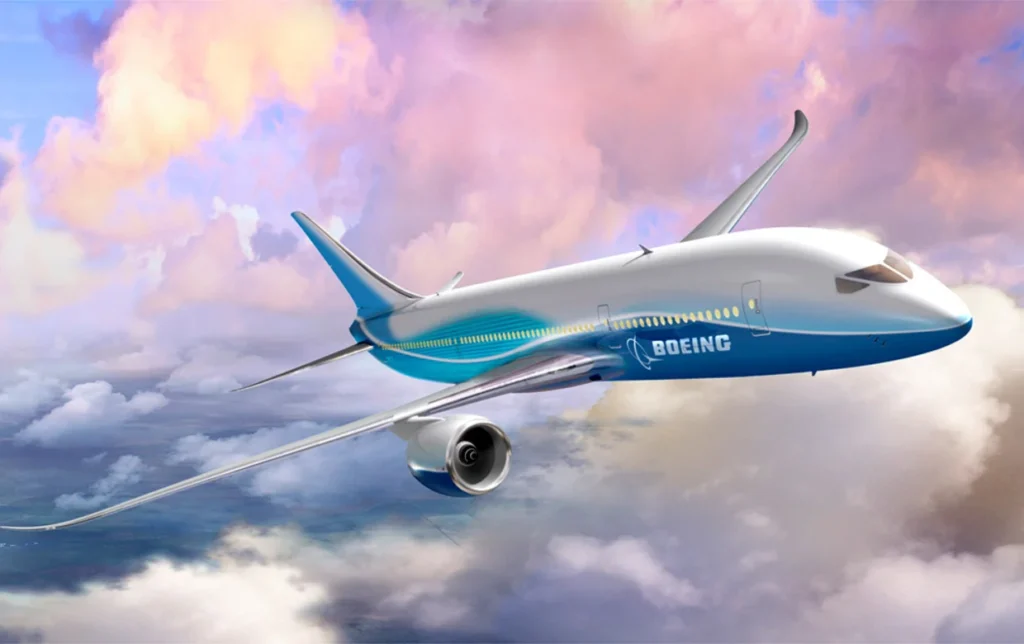
Photo: A render of the Boeing 7E7, later named 787 Dreamliner. Courtesy of Boeing
Boeing was already working on a parallel project, the 7E7, later known as the 787 Dreamliner. The creation of this aircraft was driven by the pursuit of greater fuel efficiency and the desire to incorporate the valuable insights gathered from the Sonic Cruiser’s behavioral studies. The future was there.
Boeing’s Design Philosophy: Crafting the Ultimate Passenger Experience
According to Wynhof, the CEC contains all the unseen elements that shape today’s passenger experience, all working harmoniously, creating a holistic in-flight experience.
Passengers today might ask themselves, why are overhead bins no longer squared? Why do windows on newer 737s seem bigger even though they are not? Why is the ceiling lighting different on newer planes? And why does the Dreamliner feel so different to fly on?
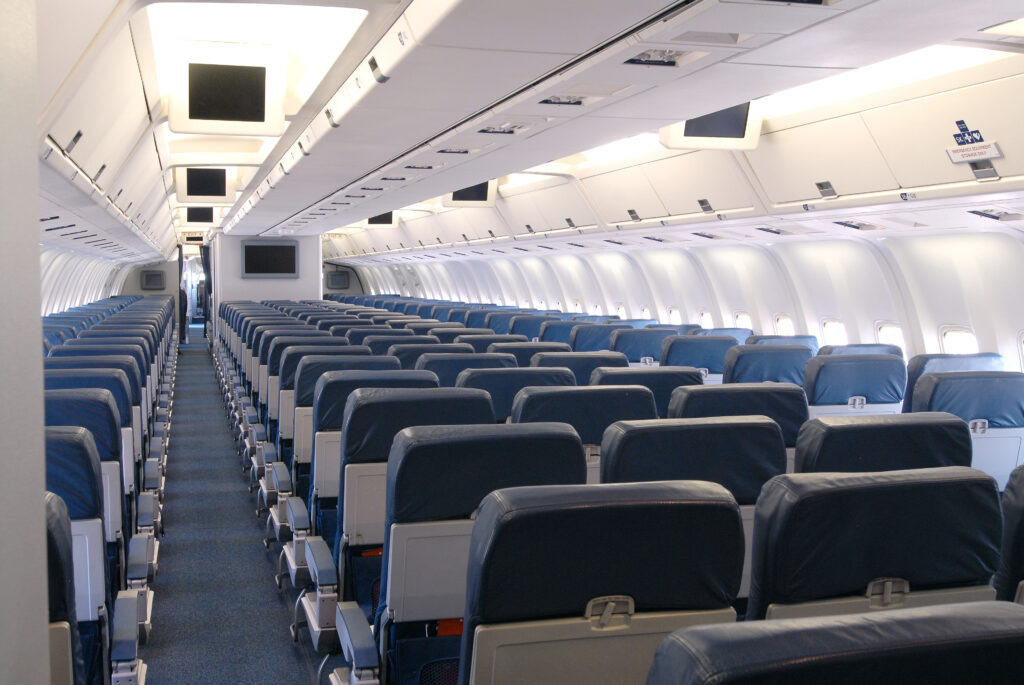
Photo: Boeing 767-300 Interior, featuring squared overhead bins. Courtesy of Delta
Wynhof says, “Every cabin component is meticulously designed, from the lighting system to the cabin architecture and even software tweaks that make the actual flying experience less excruciating.”
She adds that every cabin aspect found on Boeing’s next-generation planes has been thoughtfully designed, considering passengers, cabin, ground, and maintenance crews.

Photo: Boeing 737 MAX 9. Courtesy of United Airlines
“Design elements aren’t chosen on a whim; they are carefully curated to elevate the passenger experience,” she says. “Nothing enters the cabin because it’s trendy; it enhances the flying experience and keeps passengers connected to the joy of flight.”
Passenger experience in premium cabins heavily relies on years of research to determine what goes into the airplane. For instance, two configurations of long-haul business class seats currently dominate the market: herringbone and staggered.
So, what do they mean? Why is one more popular than the other? The configuration choice can impact the passenger experience significantly, and airlines must make informed decisions through what Boeing and its team are able to inform.
In addition to cabin configurations, Boeing’s newest planes feature the latest technology inside and out. Away from the passengers’ naked eye, the 787 Dreamliner also comes with marvelous engineering feats like a vertical gust suppression feature.
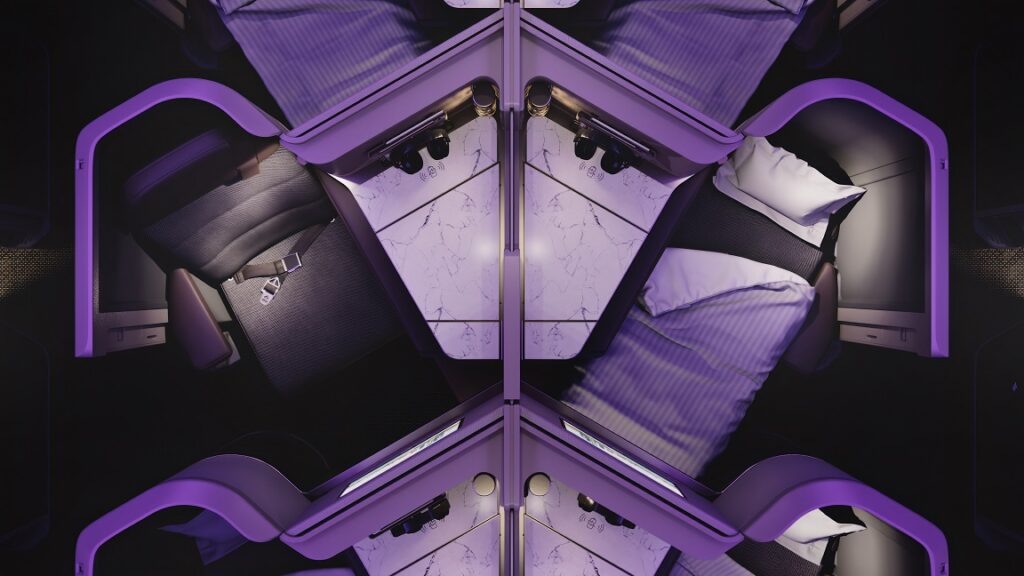
Photo: Boeing 787-9 Dreamliner, Business Class. Courtesy of Etihad Airways
“This technology transforms jarring vertical movements into manageable vibrations. The intelligent system detects moderate turbulence and adjusts flight surfaces, mitigating discomfort. This innovation significantly enhances passenger comfort during turbulent flights.”
Cabin Environment Goal: Reduce Jetlag
But apart from those neat in-flight technological upgrades, the 787 is also equipped with various innovative features that help reduce the symptoms of jetlag, dehydration, and swelling, allowing passengers to arrive at their destination feeling refreshed and less fatigued.
“There is a whole array of other features that we meticulously researched on the 787, which are benefiting passengers and crew tremendously yet remain unseen,” says Wynhof. “Some people might not even be aware of it, but all they can say is that they feel better after flying on a 787. It feels different.”
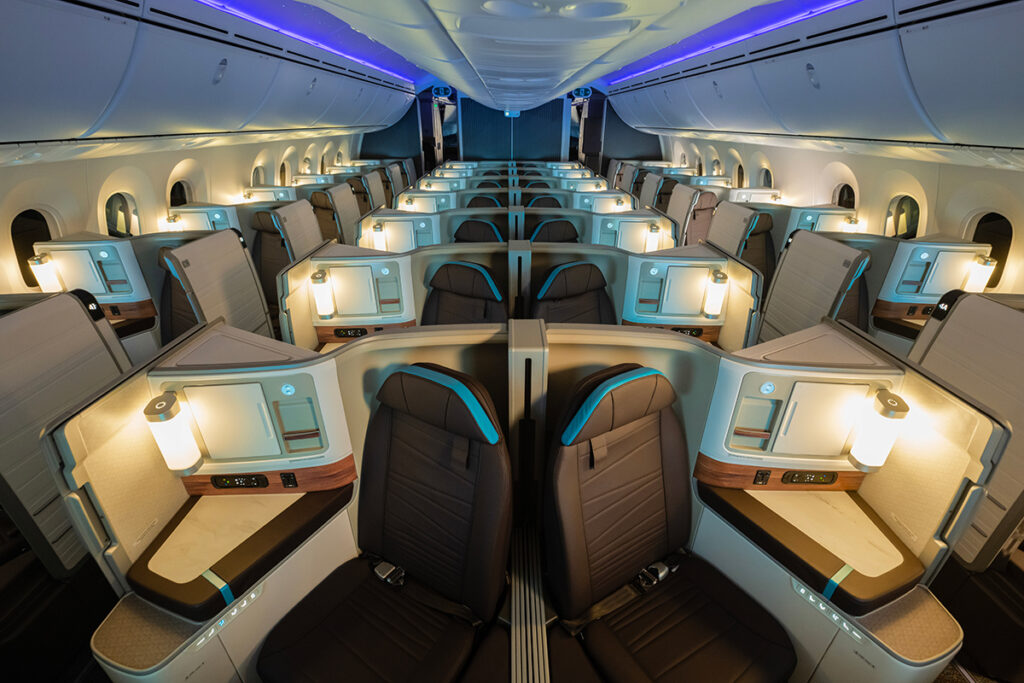
Photo: Boeing 787-9 Dreamliner, Business Class. Courtesy of Hawaiian Airlines
One of the most critical factors in designing a comfortable aircraft cabin is the effective cabin altitude. “Traditional aluminum fuselages fly at 35,000 feet, and its cabin altitude is 8,000 feet,” Wynhof explains. “The 787 offers a much lower altitude of 6,000 feet.” While a difference of 2,000 feet may not seem significant at first glance, anyone who has experienced the effects of high altitude knows how valuable this can be.
“When traveling to places with high altitudes, the body has to work harder to maintain itself, causing joint swelling, dry sinuses, and dry skin. This can be particularly uncomfortable on long flights,” Wynhof notes. “Therefore, the 2,000 feet difference in cabin altitude on the 787 can make a significant difference in passenger comfort during long-haul flights.”
“Although it cannot be claimed that it reduces jet lag, it certainly helps alleviate many of its symptoms,” she adds.
In addition, the cabin on the 787 is more humid than other aircraft because it uses a unique system known as cabin air compressors (CAX) to bring air into the cabin, as opposed to the usual ultra-cooled hot air from the engines.

Photo: Premium Economy, Boeing 787-9 Dreamliner. Courtesy of Air New Zealand.
“When air is brought in through the engine system, high temperatures cause any moisture in the air to boil out. However, CAX preserves more humidity as the air is not heated to the same level. Overall, this creates a more comfortable environment for passengers and crew,” Wynhof explains.
Furthermore, according to her, Boeing has developed a system in which pilots can adjust the cabin’s airflow rate according to the number of passengers onboard. “It’s a feat that has never been accomplished before and no other aircraft can currently achieve,” she says. “This feature also enables us to retain more moisture in the airplane.”
But in addition to cabin humidity, another significant improvement on the 787 is related to air quality—paramount in today’s post-pandemic world. “Although modern-day planes have HEPA filters, we wanted to go beyond that,” says Wynhof. “Filters cannot remove certain gaseous volatiles in the air, like those from pungent food. With the rise of people bringing their food on board, this became a more pressing issue.”
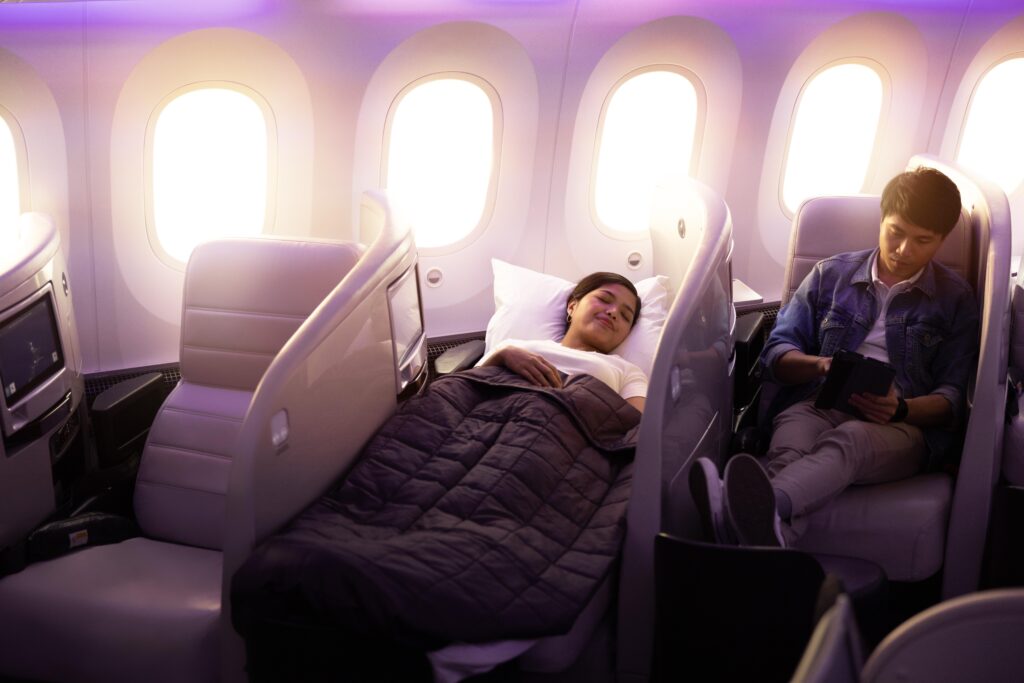
Photo: Business Class, Boeing 787-9 Dreamliner. Courtesy of Air New Zealand.
“That’s where gaseous filtration comes in – it works to remove odors and other volatile substances in the air. By combining this with HEPA filtration, the air in the 787 becomes much cleaner, resulting in a more pleasant and comfortable environment for passengers.”
By incorporating elements that have improved passenger satisfaction on the 737 MAX and 787 programs, such as advanced in-flight engineering techniques and meticulously designed cabin features—including larger and taller windows, more spacious overhead bins, a quieter cabin, and unique lighting effects—the company is now gearing up to launch its latest flagship aircraft, the 777-X.
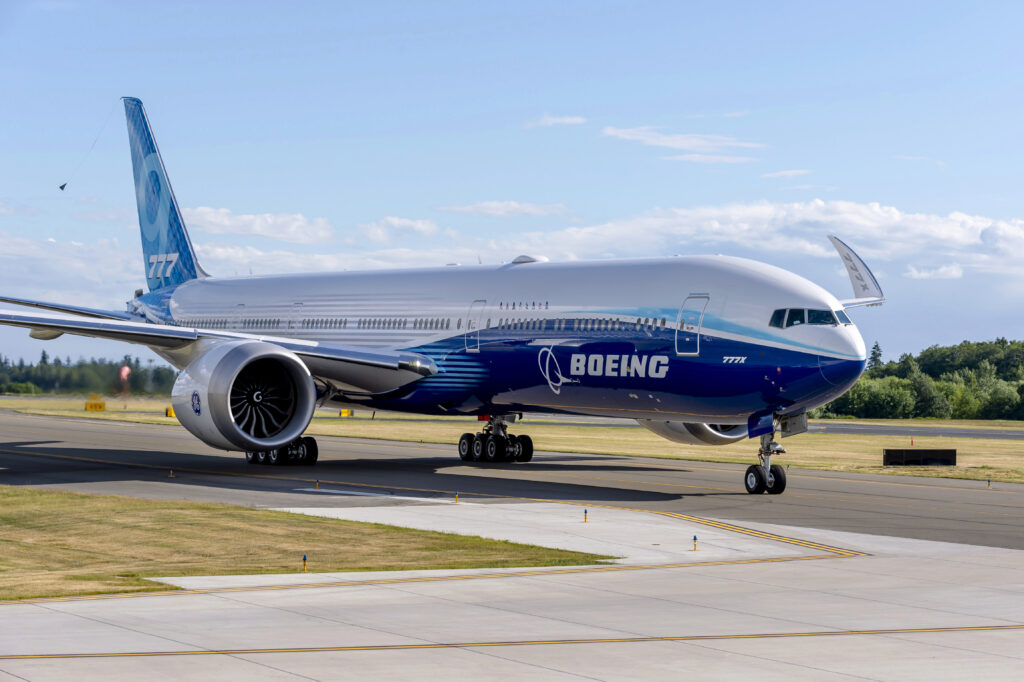
Photo: Courtesy of Boeing Commercial Airplanes
According to Wynhof, the 777-X program embodies all the features and experiences gathered from the Sonic Cruiser and the Dreamliner. And it is set to wow the world when Lufthansa and Emirates take delivery of the first planes.
So next time you board a next-generation Boeing aircraft, look around and remember: there is a lot more to it than meets the eye.
